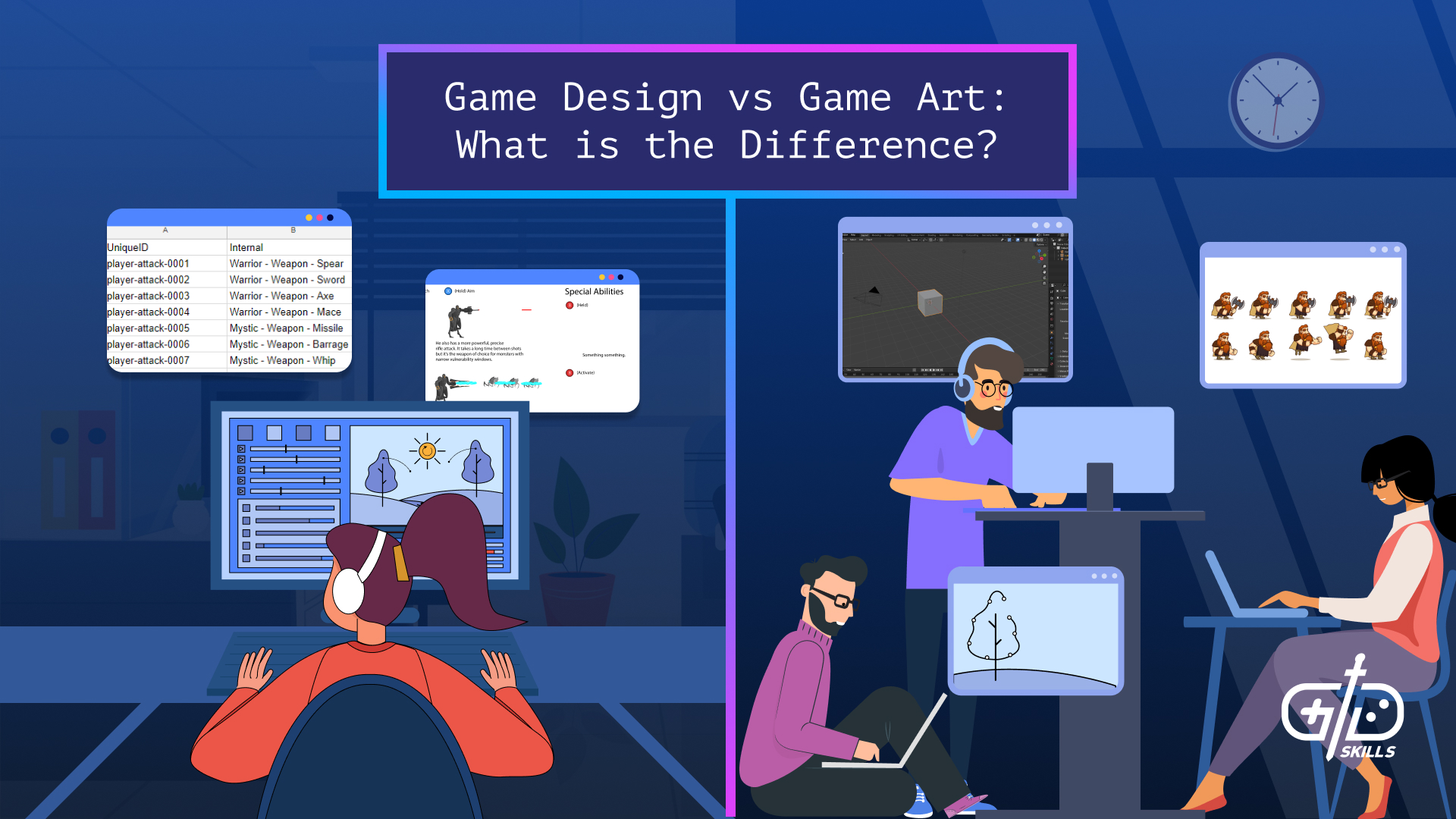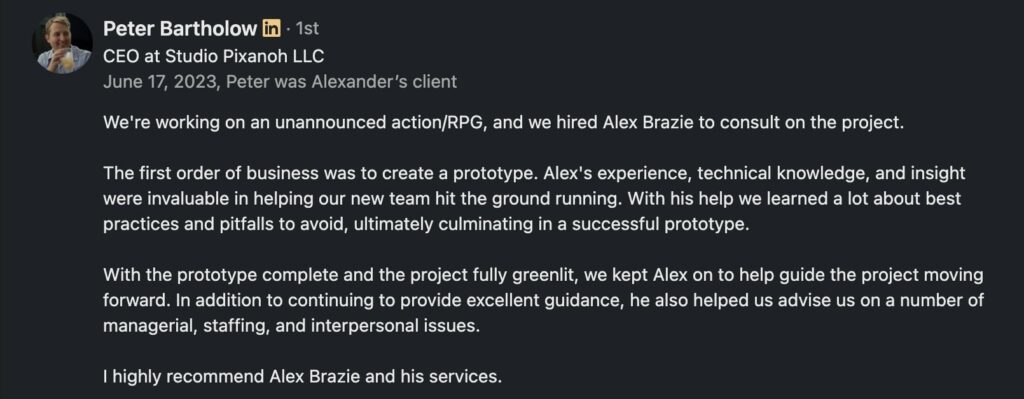Game design and game art are both types of game developer but with different responsibilities. The artists create the artwork, while the designers decide how it interacts with the game: when animations play or what a character does. The two roles work closely together, but follow different tracks and have different experience. Read on to learn about the responsibilities, career outlook, and salaries of game designers and artists.
What is the difference between game art and game design?
The difference between game art and game design is the role each plays in creating games. Game designers make a game fun, while artists make it look pretty. A game designer doesn’t need any art skills, except for the degree it helps them understand design and the user experience. A game artist doesn’t need to know about gameplay, mechanics, and systems either, although some knowledge of those things helps them understand how to make better game art. Together, each developer forms two of the main types of developer required to ship a game.
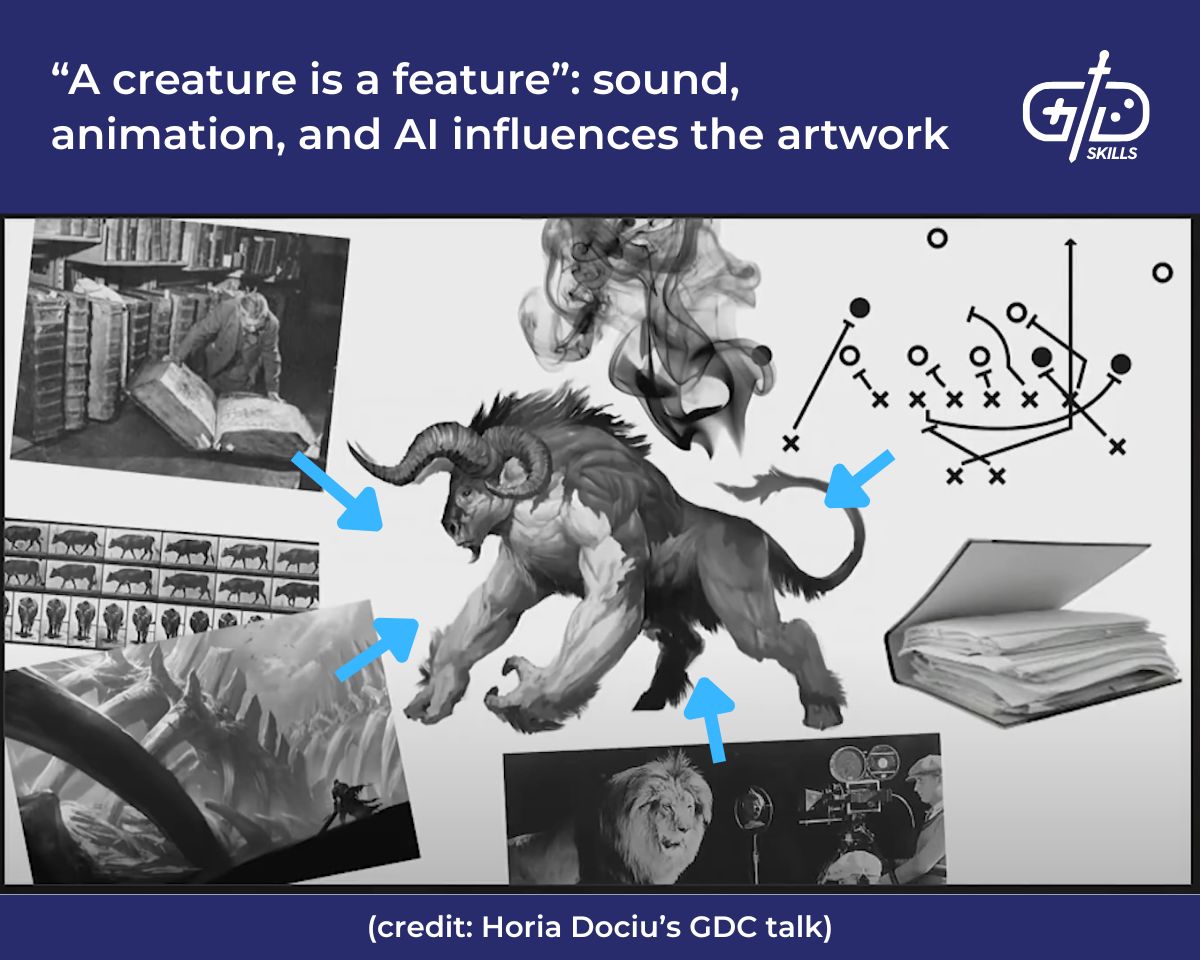
Artists and designers are two of the four main types of developer, the other two being programmers and producers. The terms designer, developer, and programmer are often confused with each other, and it’s impossible to compare artists against designers without clarifying what a designer is.
A game designer works on what makes the game fun, a process which doesn’t necessarily involve coding (though knowing how to code is often a part of their skillset, and using an engine definitely is). Programmers are the ones who work on the tech that supports other developers, including designers and artists: the engine, devops, rendering, physics, and so on.
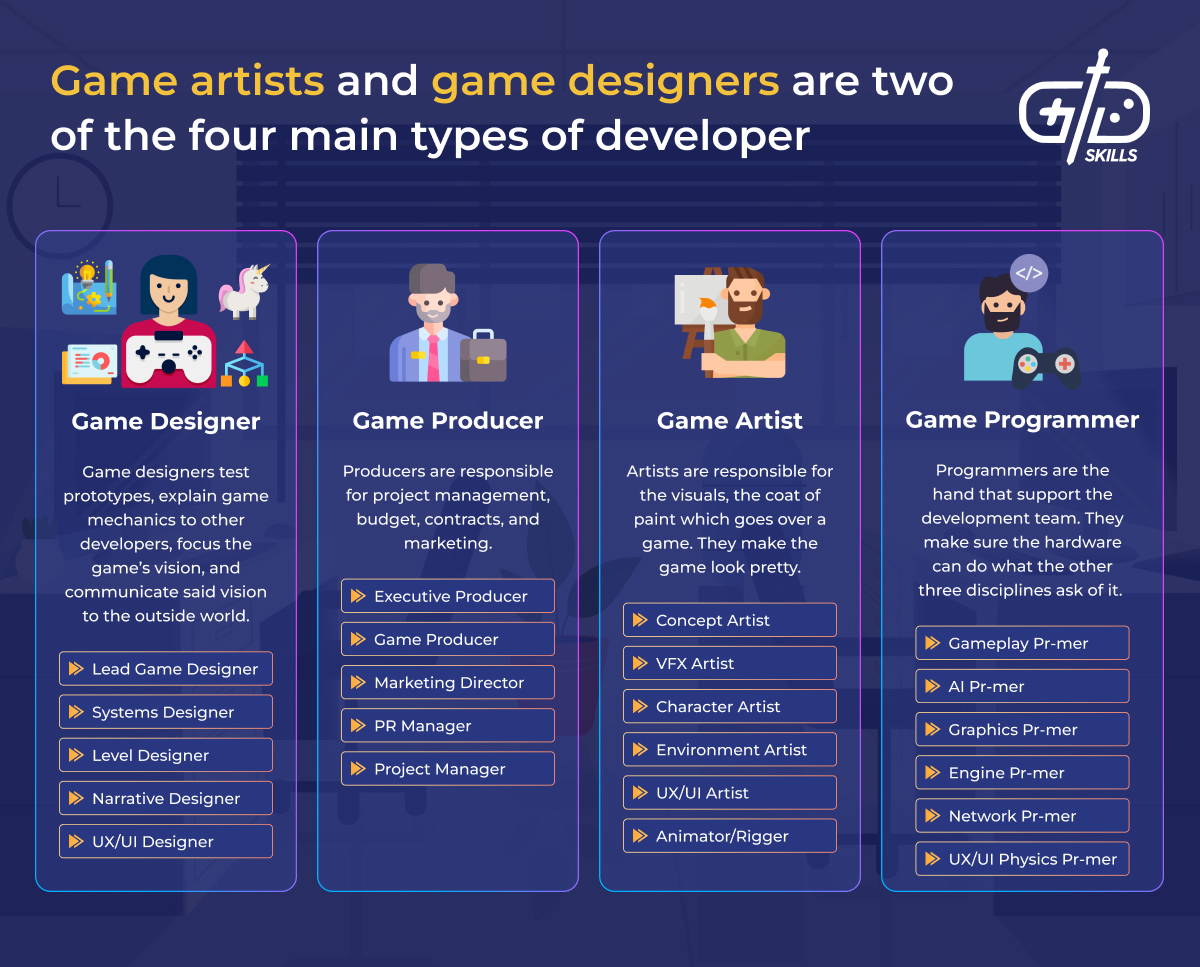
A game designer’s process follows a different flow than artists, where iteration plays a smaller role. The process varies from designer to designer, but there are some processes they all have in common. Designers begin with ideation, coming up with mechanics, systems, or features that will go into the game.
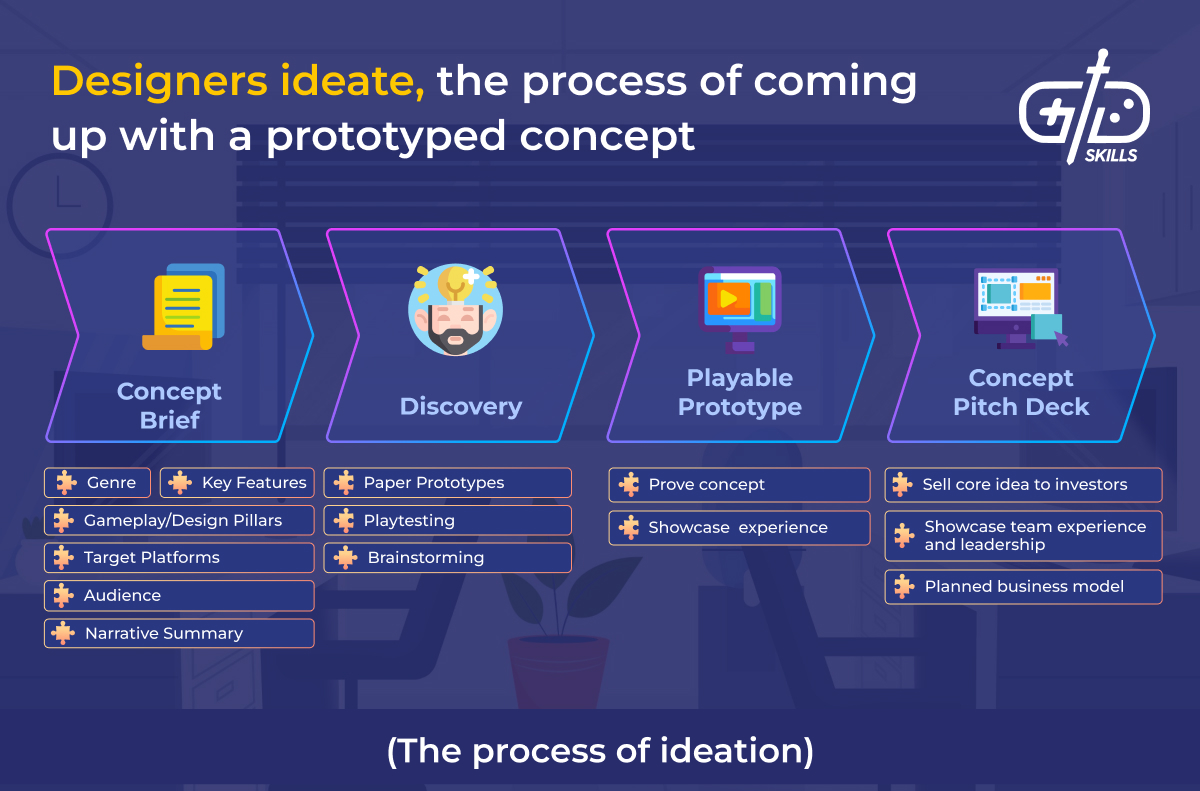
The design process moves into playtesting when ideation has resulted in a workable prototype of a feature. Playtesting is the most important of the unique responsibilities of a designer. The only way to be sure a game works for the target audience is by having that audience play the game. Problems with the rules, levels, enemies, combat encounters, or core mechanics are difficult to predict in the mind’s eye but become clear in testing. The job of the designer is to walk away from playtesting with ideas about what to change, at which point they return to coming up with more ideas, tweaking the experience, and testing again.
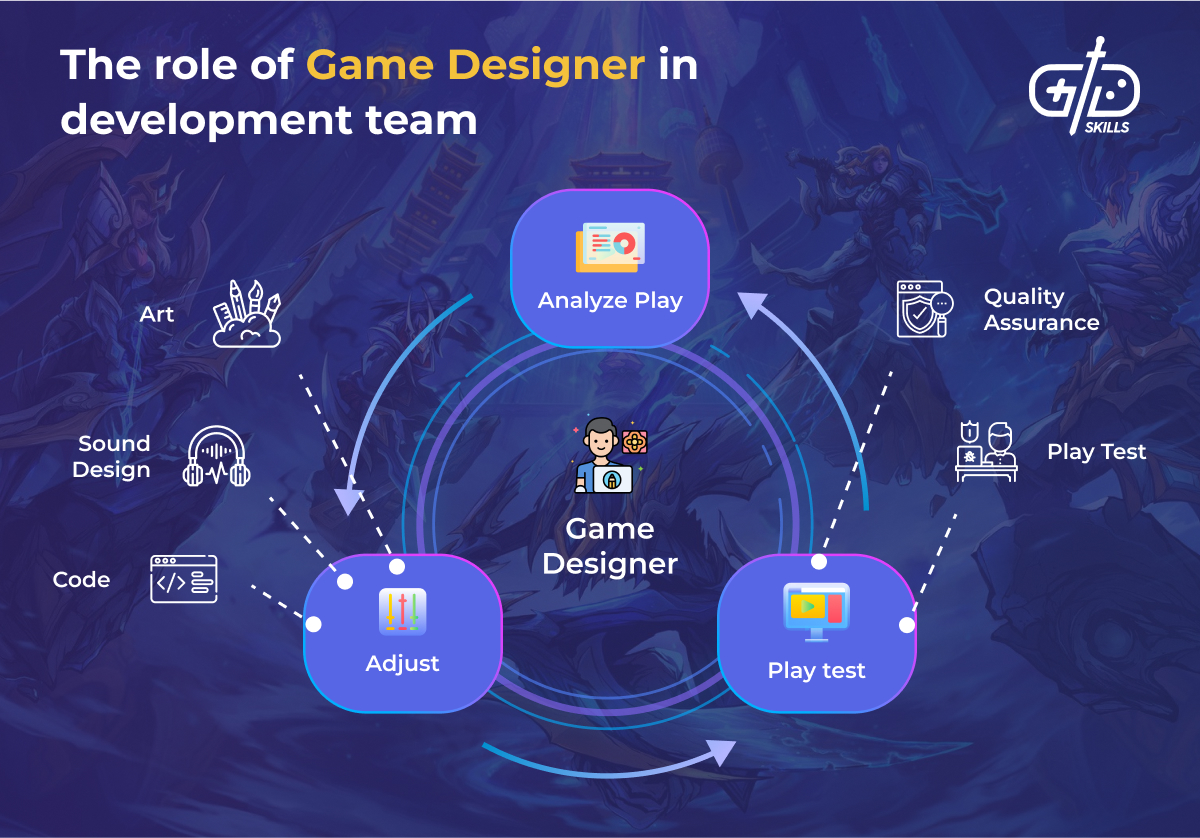
A game artist has the responsibility to make the game look pretty by creating 3D models, animations, textures, illustrations, visual effects (VFX), and the UI. Game artists have the same background as other types of artists: a game artist also has the ability to find work as a graphic designer or CG artist for movies. What makes a game art job different is that they create these visual aspects of the game in accordance with the designers’ direction.
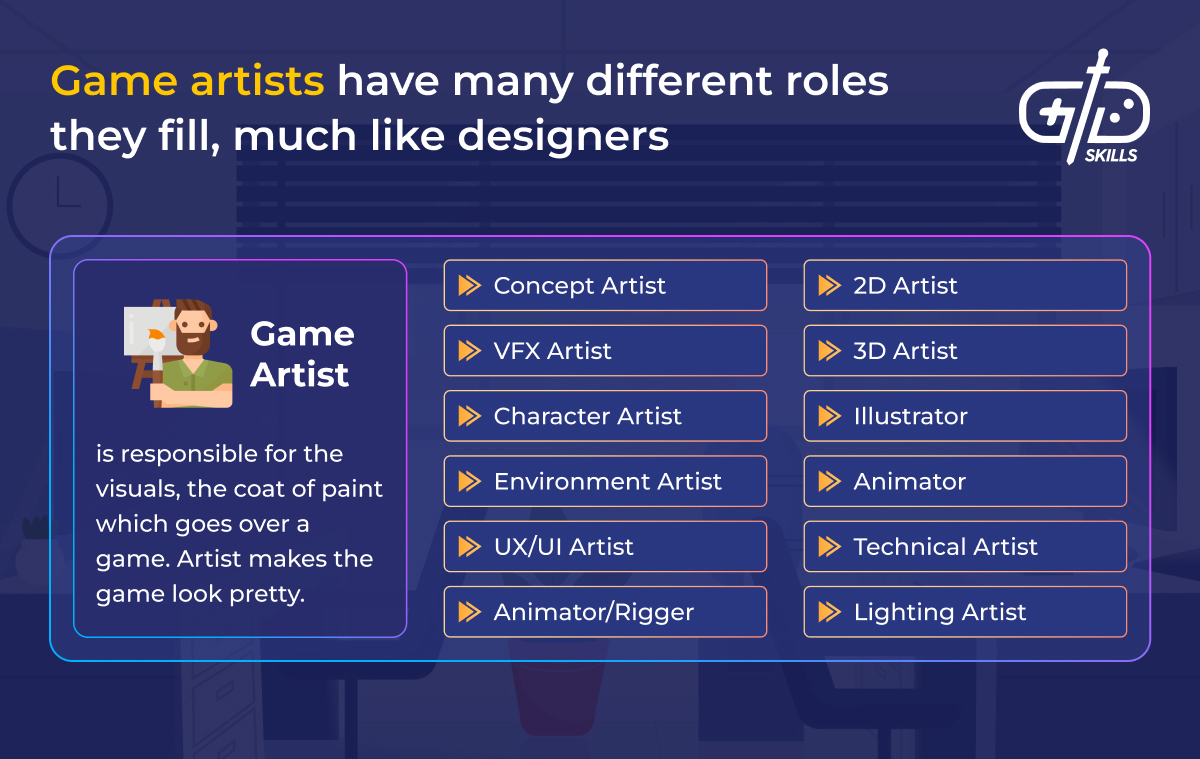
Artists work hand-in-hand with designers to make sure their designs are polished and well-communicated to the player. An environment artist works closely with a level designer, for example. The level designer puts together a basic level layout in the engine or 3D modeling software. Level designers don’t think about how to make it pretty: they think about sightlines, pacing, and obstacles. A level has some visual cues placed by the designer: a certain color leading the player through the level, a pretty view of the environment from a vantage point. The environment artist receives these wishes from the level designer and works with them to create the final 3D models, textures, and effects that make the level look like it belongs in the game.

The amount of time artists think about game design depends on the artist. A concept artist aims to create a certain experience in the player with their artwork just as a designer aims to create an experience with their mechanics. The artist in this case thinks a lot more about the feature they’re trying to explain to the player or the emotion they’re trying to evoke. Animators work closely with a character designer or combat designer to make sure her movements fit the attacks or abilities planned for her. A 3D artist working on props, though, doesn’t think about design as much. They change their work in response to feedback from designers, but focus much more on 3D designs alone and how to match them to the concept art and aesthetic of the game.
All types of game designers interact with artists. The following list includes examples of designers and how they work with artists.
- Enemy designer: Has in mind an enemy with certain strengths and weaknesses, stats, behaviors, and visual cues. An example is Captain Brineybeard’s ship in Cuphead: the boat’s chewing animation, created by an artist, telegraphs an attack, designed by a designer.
- Systems designer: Creates the parts of the game a player doesn’t have direct control over, like level progression, loot tables, or procedural generation. Artists communicate the hidden systems to the player: colors for different item rarities, for example.
- Narrative designer: Thinks about how the characters and story works. An artist takes the descriptions from a narrative designer into account when creating a character’s appearance.
- Level designers: Think about sightlines, vistas, and how visual cues guide the player; they have some part to play in the visual design of the level. The final polished veneer comes from the artists.
Is it easier to start a career as a game designer or game artist?
It is harder to start a career as a game designer since there isn’t a set way to learn the discipline. Designers are self-taught, or come out of college with unrelated degrees: computer science, math, psychology, or even chemistry in the case of Scott Mercer. The art discipline, on the other hand, is more established. Art school graduates come away with respected degrees and art that’s ready to include in a portfolio. I’m a bit biased due to my personal experience as a designer, though. There’s no question the field is a volatile place for both types of game developer, even artists.
The design career is more difficult to get into because it’s a much newer career. Designers work in a field without the same established education and tools as art, which sums up a lot of the issues they face. Game design degrees exist, but often focus too heavily on programming and art, are taught by professors who didn’t work in the industry, or don’t get students experience working with a team to ship a product.
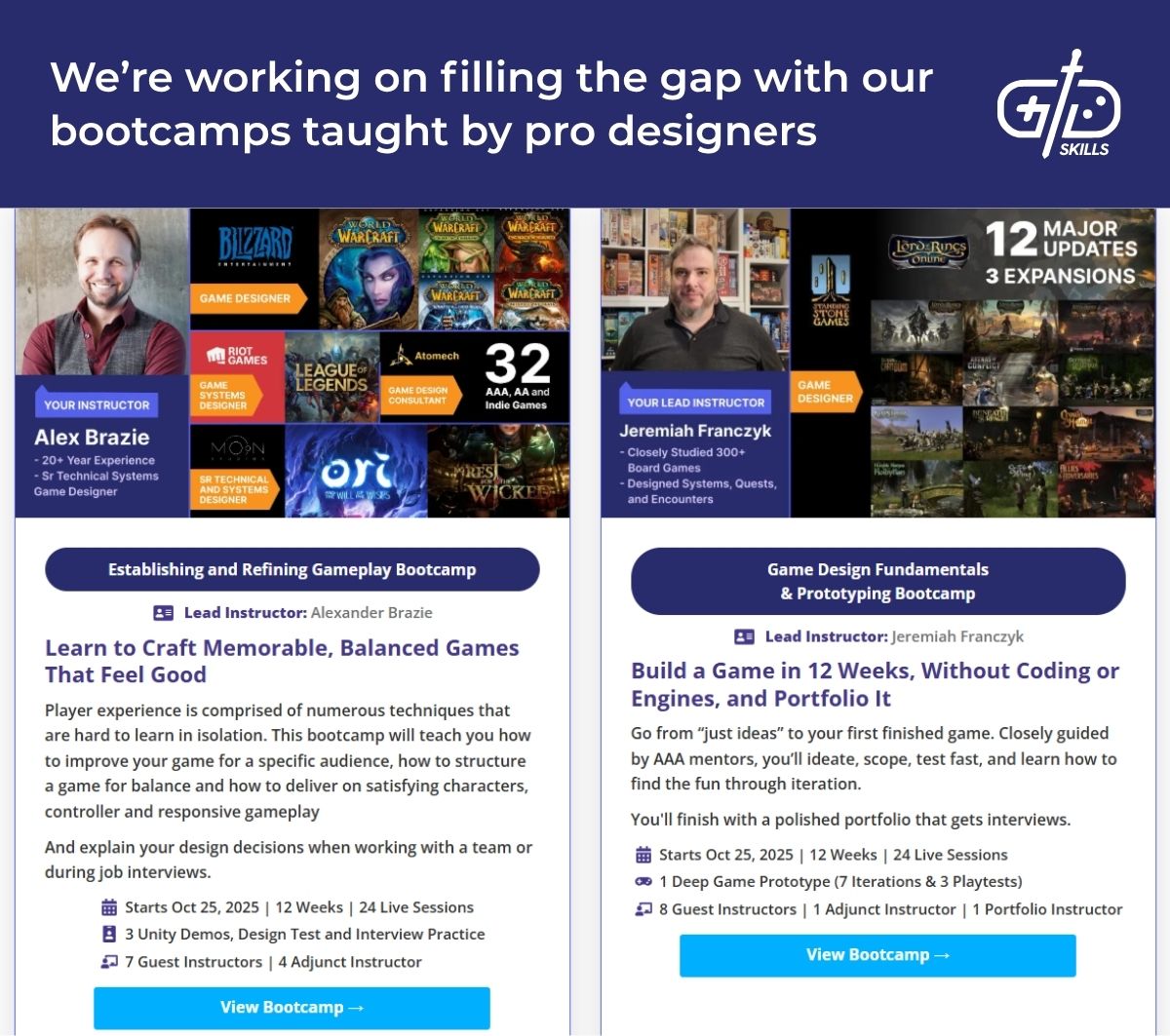
The lack of respected programs becomes a problem when preparing a portfolio for applications. A portfolio shows critical thinking skills beyond programming and 3D art. Whether a designer is self-taught or school-educated, they need to sell a thought process, not a piece of art or a set of concrete skills. A game design portfolio shows the trade-offs, victories, and failures that took place when designing a project. An artist doesn’t face the same challenge: she doesn’t need to show the full process to show she’s good at what she does.
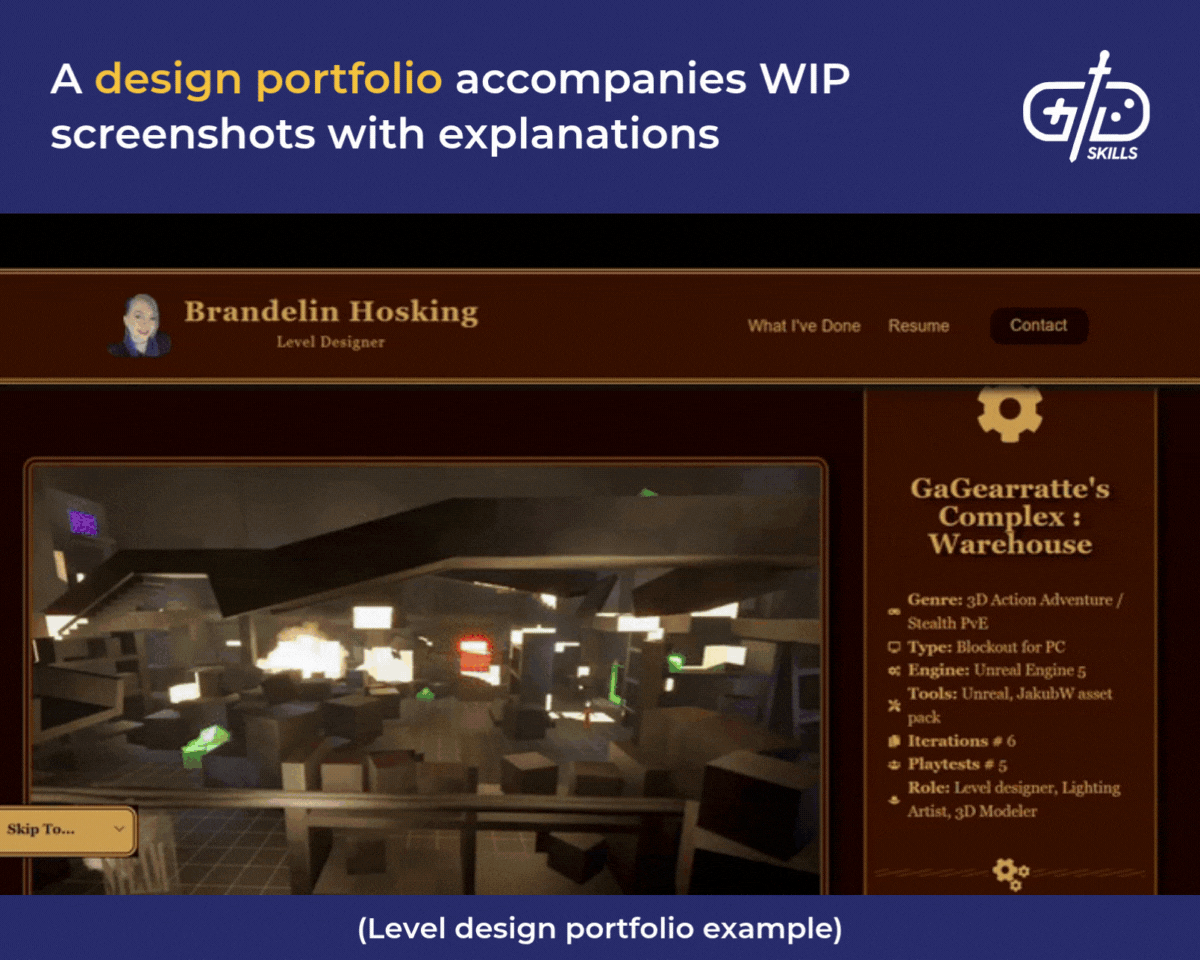
Designers have to work for years to build up a portfolio, and to hit a moving target at that. Game design disciplines have fuzzy boundaries, the industry being so new and its needs being so varied between studios. A mission designer at Rockstar is a quest designer at Bethesda. A narrative designer at one studio does a lot of game writing, while another studio has a dedicated game writer and the narrative designer focuses on dialogue and quests.
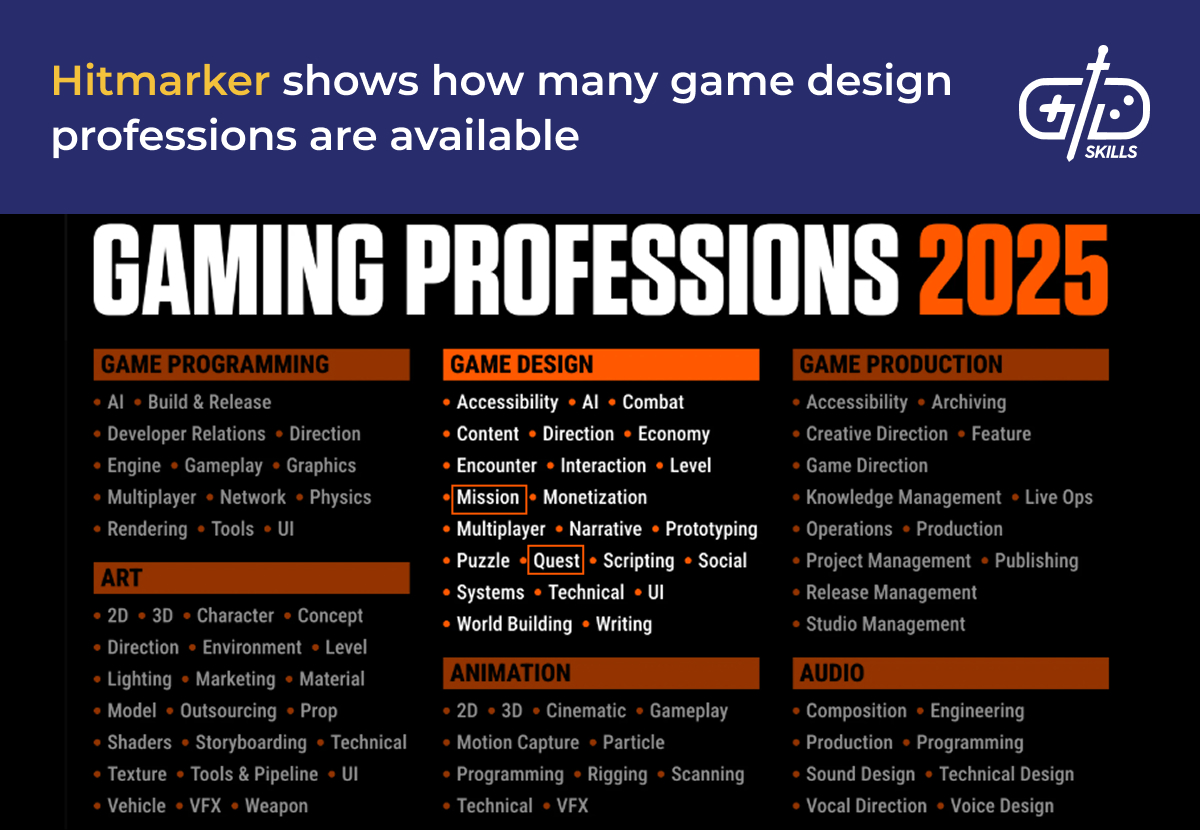
Artists have their own challenges to entering the modern game industry, though. While artists have the advantage of being able to show their results more clearly, they still need to build the experience. Some artists get jobs outside the industry to build up their portfolio (or because the job market is poor at the moment).
Different art skills aren’t necessarily transferable either, so getting the right kind of experience is important. Deciding what to include in a portfolio is a challenge for someone first entering a creative industry. Let’s say a studio is looking for a 3D artist proficient in Maya. An artist with 10 years of experience but only 1 year with Maya isn’t as desirable as a candidate with 3 years experience and all of it in Maya. The artist with less experience in Maya will have more success if they focus on their 1 year of experience with the tool here, even though there is another 10 years of unrelated experience behind it. The job isn’t looking for that other experience. Experience with design concepts is desirable as well, a special challenge for artists coming from out of the industry. A portfolio reflecting their design experience gives them an edge in the job market.

Use of AI puts a big question mark over the future of artists in the industry. OpenAI earned a lot of attention for ChatGPT’s Studio Ghibli-esque transformations of photos and Sora’s video creating capability. The role of artists remains an open question as AI tools develop, but AI is much better at coding than it is creating pleasing compositions. AI tools for creating artwork tend to make mistakes: giving people extra fingers, unnaturally smooth skin, and missing the fine details that make an image look right to the human eye. It’s up to the artist to adjust the artwork and make sure it matches the vision; the tool isn’t replacing artists yet.
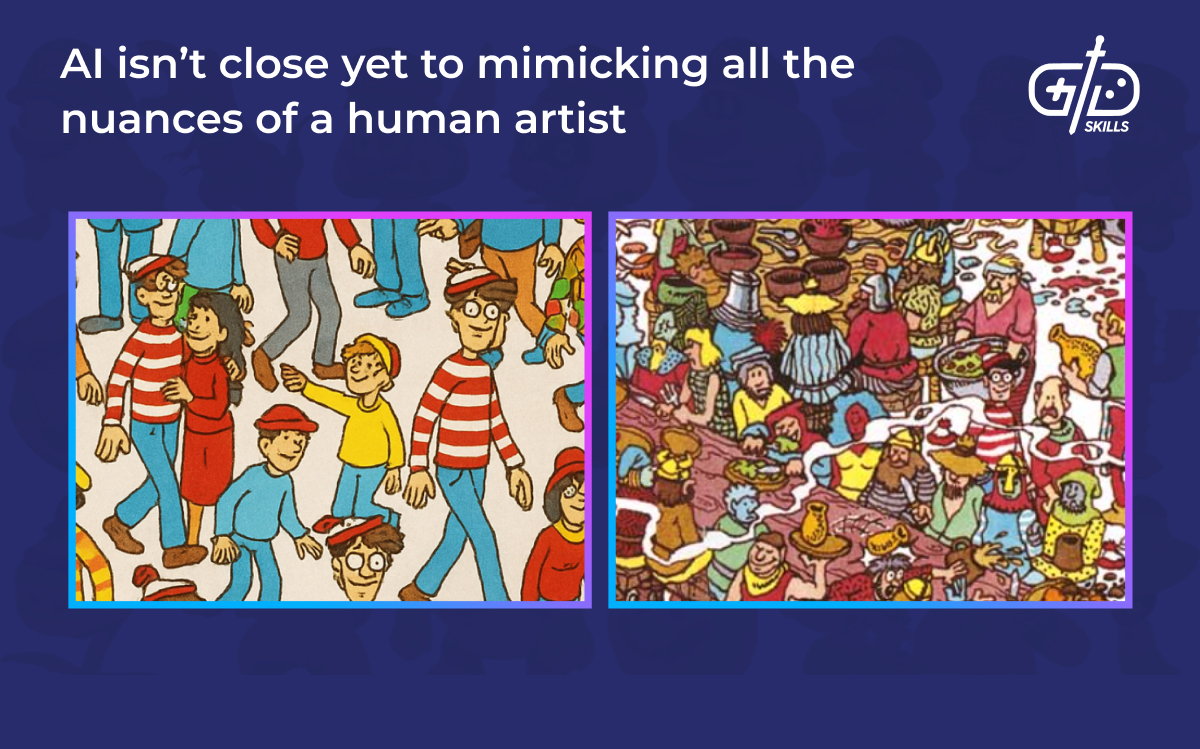
Both disciplines share challenges that come from working in a creative field. The industry is competitive and the application process is intense. The application requires several steps to stand out in the crowd. Applicants start by submitting a resume and portfolio, which prove the applicant has the skills they say they do. The interview is the next logical step, which shows whether the applicant is a good fit for the team. There are several interviews to introduce the applicant to hiring managers and the team. Another filter still remains after this: a test to show the applicant has the ability to do the work the team needs for the role. Designers often get stuck as early as the portfolio phase since a design portfolio is so unique.

Who has a higher salary between a game artist and a game designer?
A game designer has a higher salary than a game artist when looking at the highest paying positions, but both come pretty close to each other on average. Combined with the highest earning locations and entry level salaries, the statistics paint a clearer picture of the range of salaries available, from as low as around $30k to near $150k per year. The results for salaries came from searches for “game designer” and “game artist” unless otherwise indicated.
The data for game designers and artists both show a salary higher than median pay in the US. The median designer salary is $99,000 on Glassdoor compared to $79,000 for game artists. Positions expecting years of experience skew the numbers a little: seniors, leads, and those with the most experience make more than $100k in either discipline.
The IGDA survey is another source for average pay and demographics that shows a large range between the highest and lowest earners though. The survey is relatively small but targets game developers better than job board sites, where the position titles and descriptions are inconsistent. The highest earners in the survey earn >$150k compared to the lowest earners, who are mostly freelancers and earn <$15k per year.
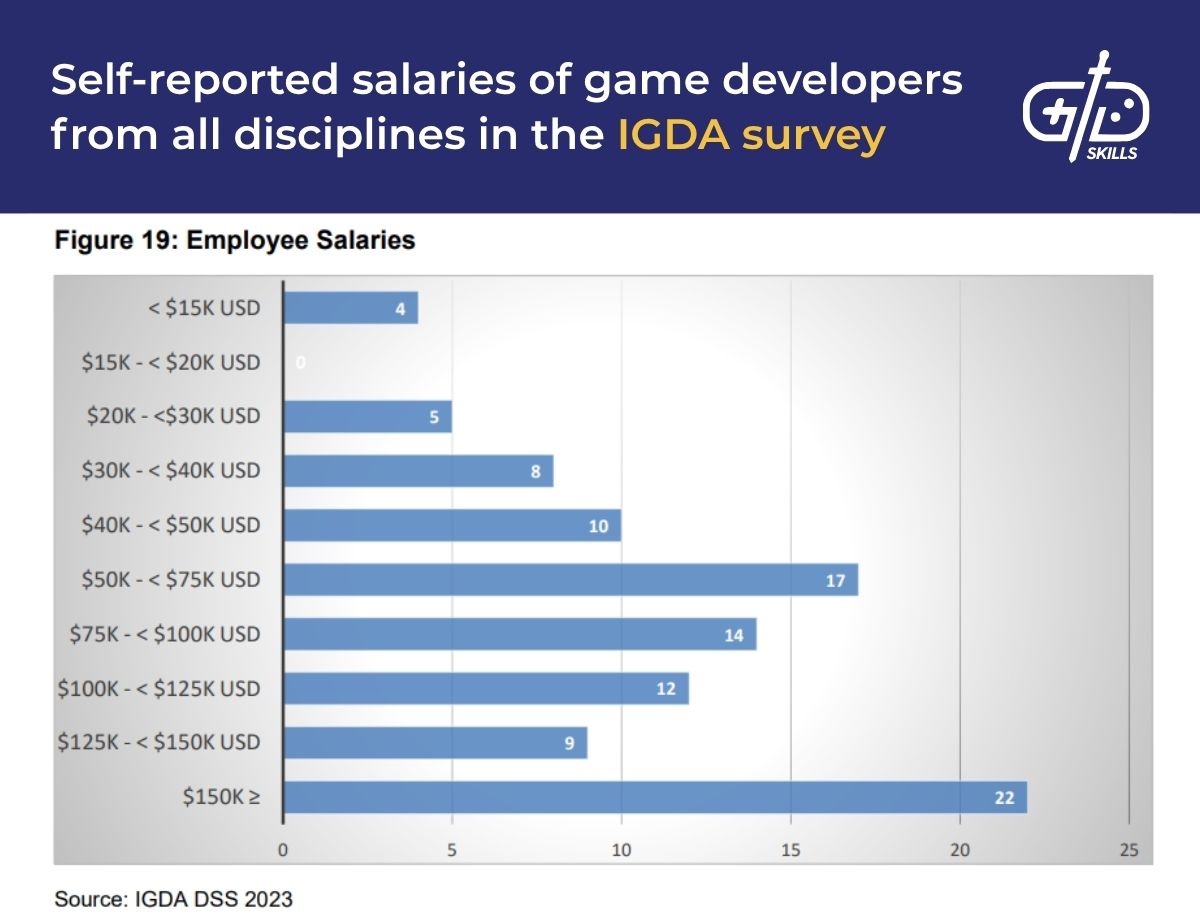
Salaries for game designers and game artists look different depending on location, not just position. The most available and accurate data is for parts of the US. California and New York tend to have the highest average salaries for these positions, either due to the high cost of living or greater competition. The cities in these states with the highest average salary for a game designer according to Zippia are San Francisco with $110,000 and New York City with $94,000. The locations with the highest average salary for a game artist on Zip Recruiter are Nome, AK, Berkeley, CA, and Belmont, CA.
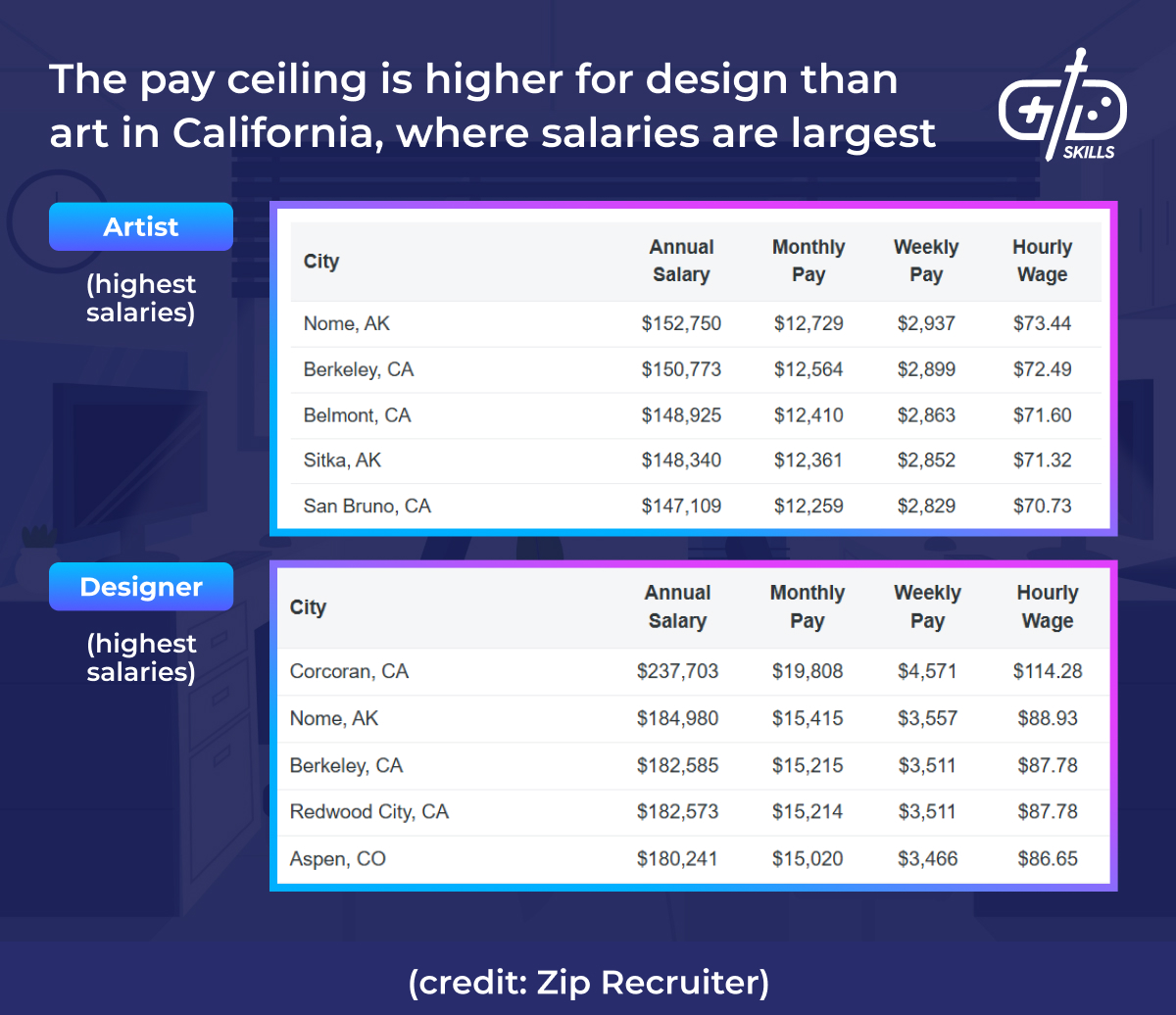
Each source of data has a limited amount of job postings, though, so getting an idea of entry level salaries is difficult from these numbers alone. The lowest salaries on Glassdoor summarize the minimum starting salaries a new designer is likely to see. Filtering the lowest salaries by developers in the first 3 years of their career shows the designers range from about $30k-$50k, while beginner artists range from about $40k-$50k. Art shows a big range since the disciplines are more clearly distinguished on recruiting sites: a 3D artist makes more money than a concept artist, for example. The following table shows entry level salary ranges for listings from AAA studios and Fortune 500 companies on Glassdoor.
|
Studio |
Designer Entry-Level Salary |
Artist Entry-Level Salary |
| Blizzard | ~$30k | $41k-$49k |
| Riot Games | $56k | $48k |
| EA | ~$30k | $40-$50k |
| ~$30k | N/A |
Have you noticed any other big differences between designing games and creating their artwork? Or surprising places where the skill sets overlap? Leave a comment and let’s talk about it!


